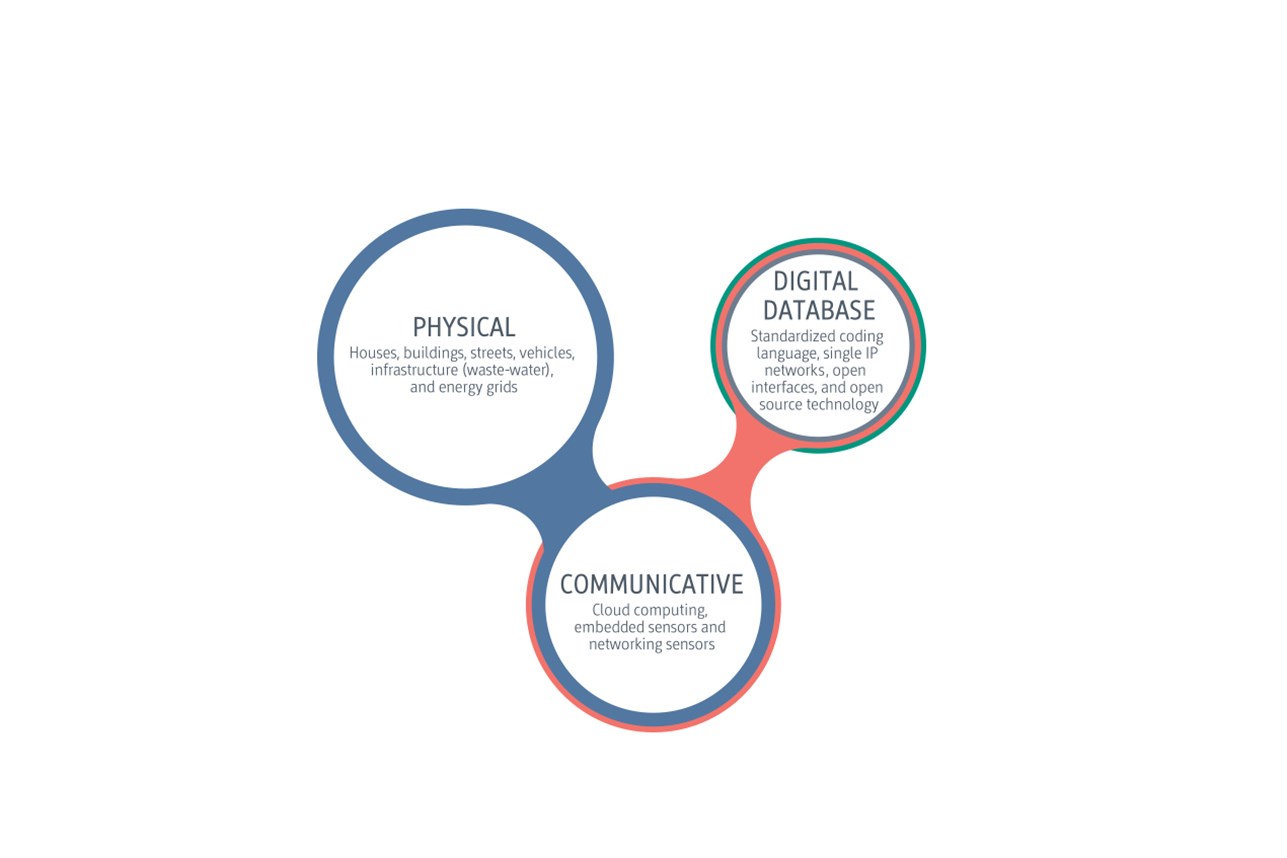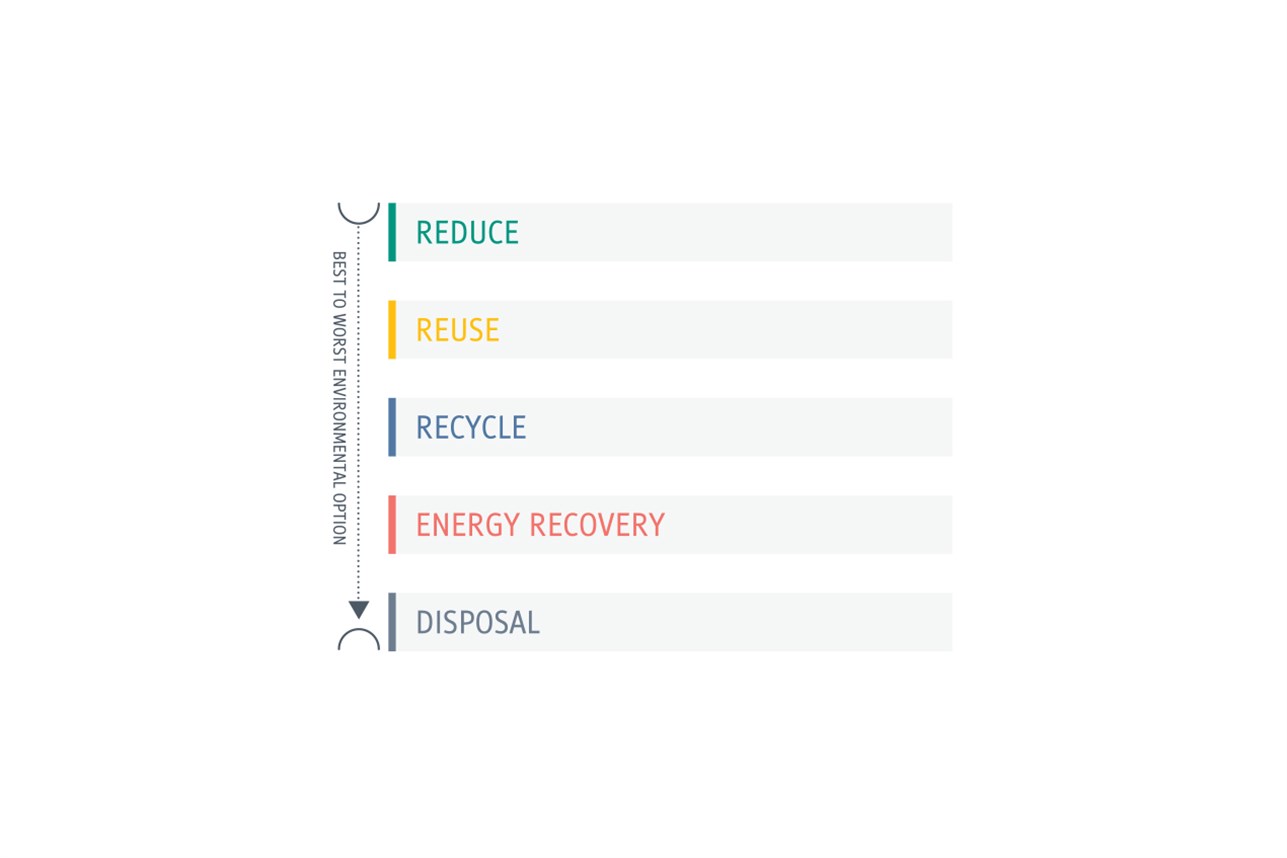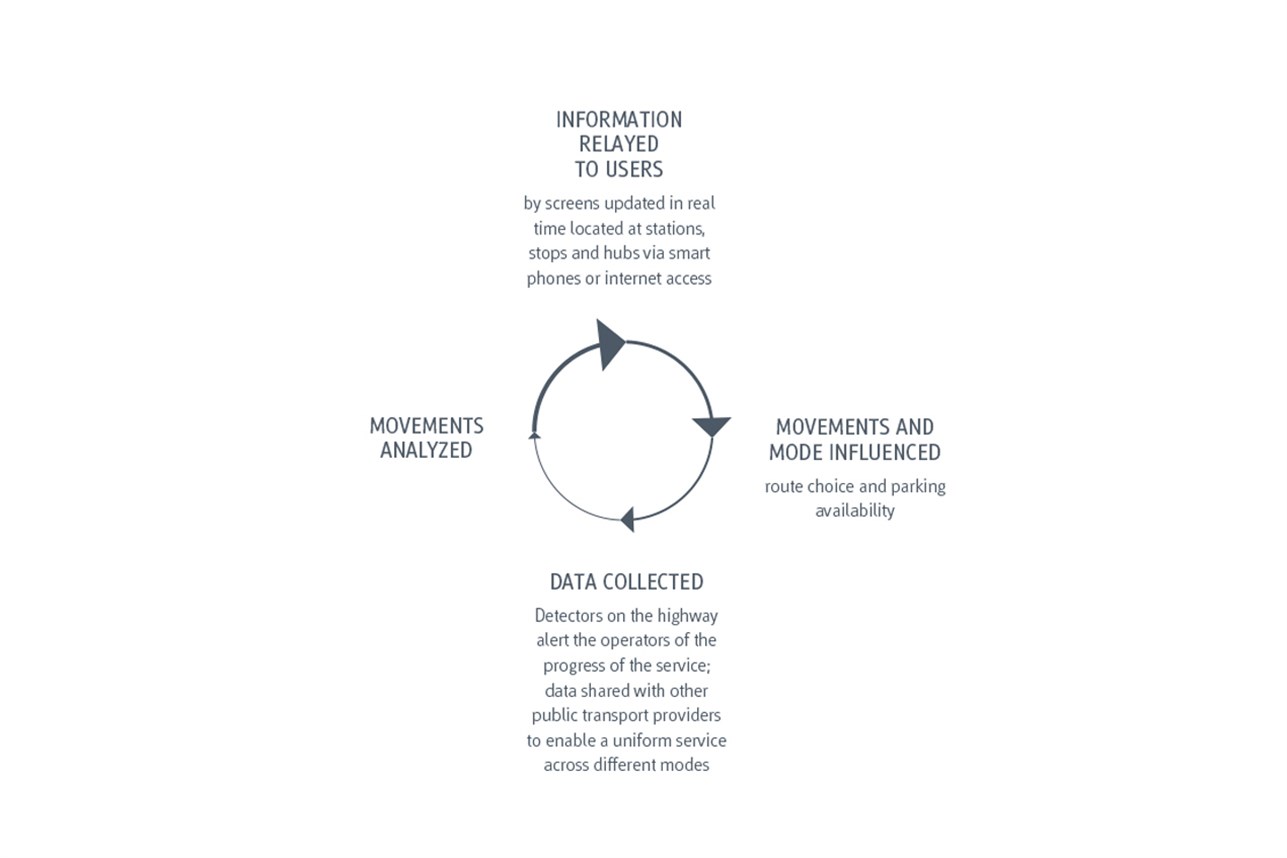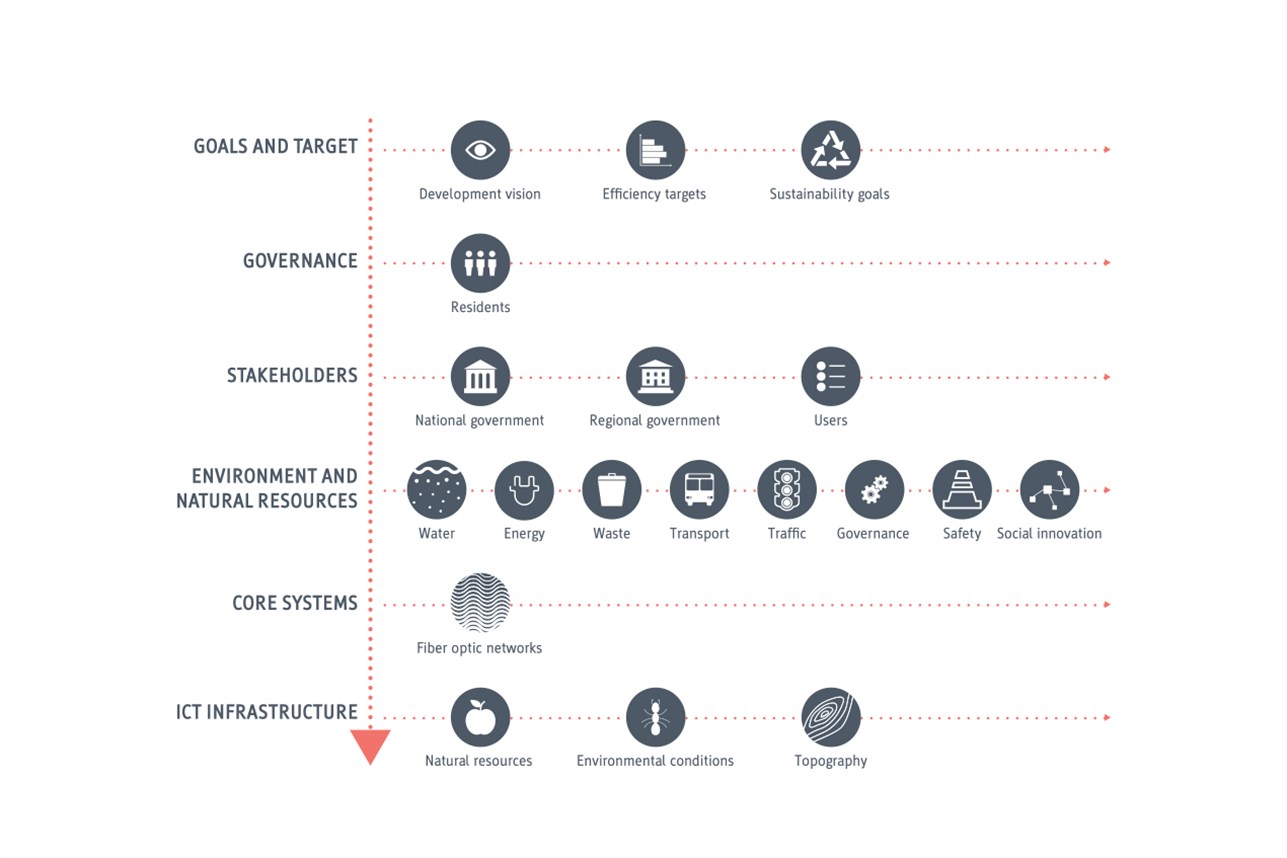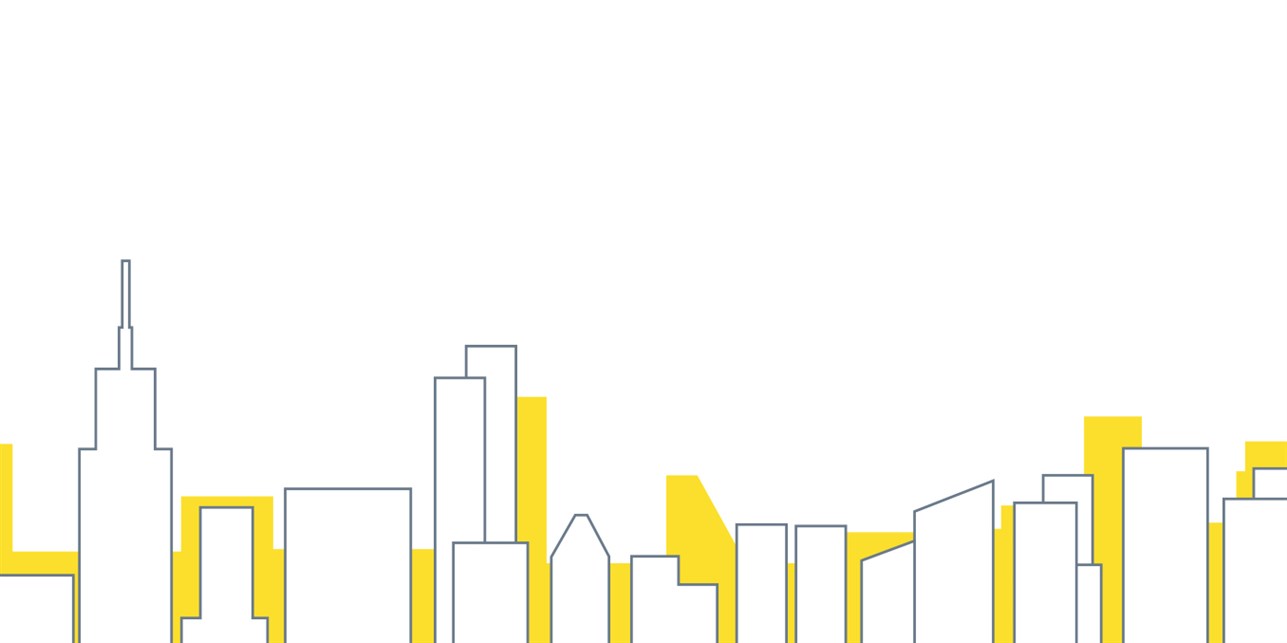
Smart City
1. SMART CITIES, WHAT ARE THEY?
This century’s technological milestones have altered the dynamics around which our cities operate. Some argue that these milestones rival the changes induced by the Industrial Revolution in the 19th century. Today’s cities rely on advanced technologies and are sources of enormous amounts of information associated with their every function. They operate as a complex network of components: citizens, businesses, communications, energy, water, transport, services, and others. The increasing dependency of these components on new technologies and digital processes has a considerable impact on our culture, and on our ability to live, work and communicate. In short, it alters the urban performance of cities.
Urban performance is highly dependent on two types of capital:
- The physical capital as in hard infrastructure
- The intellectual and social capital as in social infrastructure and knowledge communication. This form of capital is highly significant for the urban competitiveness of cities.
These forms of capital are shaped by a multitude of flows of information connecting individuals, organizations and activities: data about our location, consumption and production modes, tastes, and so forth. The better understanding of these extensive volumes of urban data is made possible via information and communication technologies (ICTs).
One where there is effective integration of physical, digital and human systems in the built environment to deliver a sustainable, prosperous and inclusive future for its citizens.
British Standards Institute
The smart city concept emerges from the need to better exploit these forms in order to deliver societal, economic and environmental value.
Embedding communicative technology in the built environment is at the basis of the smart city concept. The concept revolves around gathering data and acting on information about the behavior of suppliers and consumers in an automated fashion. It highlights the constructive edge of technology, which aims at managing more efficiently our cities, connecting people and systems, and empowering societies.
The process
Collecting + Coordinating + Anticipating
The ICT infrastructure layer must be considered during the planning stage for maximum impact and efficiency. During this stage, city information systems are linked to each other, spanning across energy, water, waste management, transport, andtelecommunications, from city-scale to individual homes.
The following steps can be followed for the purpose.
Step 1. Collect and analyze data in real time at every level of the city operating systems, from the most public to the very private: data coming from transportation activities (buses, trains), infrastructure utilities (water pipes, gas lines), community services (hospitals, clinics), and living units.
Step 2. Coordinate resources and manage responses by sharing information across agencies, events and processes in real time through statistics and computer programming. Department sharing of information is a paradigm shift in urban management as it informs decision making e.g. data on transportation can affect economic development, and data on public safety can be relevant to housing policy.
Step 3. Anticipate problems by depicting patterns and trends in structured or unstructured data.
This process aims at:
- Giving the right information to the right people in the right time
- Informing decision-making processes
- Anticipating results
- Responding to challenges while optimizing resources
- Measuring impacts efficiently
Smart Cities’ key technology streams
Networking technology
Networking technology consists of bringing higher broadband capacity with FTTH, 4G LTE, IP multimedia systems, and future networking technologies.
Aim: It enables mass interaction at a reasonable cost for a high quality service.
Application: Networking technology makes possible remote diagnosis in healthcare, web streaming of events and other functions from a distance. In such environments, less people will have to travel in and out the city; thus, the level of congestion and wasted time and resources is reduced.
Cloud computing
Cloud computing consists of using a network of remote servers rather than a local server to store, manage and process data.
Aim: Cloud computing accelerates technology diffusion, learning processes and solutions awareness at city administrations and their IT departments.
Application: One application for cloud computing is the telepresence system that enables one to control house lighting, air conditioning, heating systems, and curtains remotely.
Embedded sensors
Embedded sensors refer to the practice of deploying devices into the city’s physical space to detect and respond to inputs from the physical environment (light, heat, motion, pressure, and so on).
Aim: The interconnection of mobile devices and sensors allows for a better collection and analysis of data, and hence a better management and forecast of urban and natural flows.
Application: Embedded sensors can be used to regulate water usage according to environmental conditions detected by weather sensors.
These types of spatial intelligence connect the virtual and physical realms via massive amounts of electronic devices distributed in houses, vehicles, streets, buildings, and many other public environments. These technology devices are self-regulating, allowing automation of traditional processes and infrastructure with little human intervention. They open a new paradigm of spatial intelligence in cities, leading to system-wide efficiencies, better informed decisions and economic savings.
While this technology blurs the limit between the private dynamics of an individual and the public dynamics of a whole society, it is an enabler.
The smartest thing about smart
Retrofitting + Sharing
The smartest thing is definitely not technology per se, but rather how well technology is used in an integrated way to help the city function more effectively. When cities exist and are not planned from scratch, being able to retrofit smart designs is the smartest edge of smart technologies.
Paris, London
Building on existing foundations + Engaging customers/users, businesses and service providers is the smart thing to do. Why?
- End users can actively participate in the system.
- A better use of smart mechanisms is achieved.
- Open data policies achieve better mechanisms of governance: they reduce or change traditional intermediaries to obtain information, extend the possible use and interpretation of data beyond the local context, and prompt the emergence of new markets.
- The creation of new businesses and services fosters innovation and adds value.
Open data policies have been implemented across the world: in the US (the Open Government Directive in 2009), Canada, France, Norway, Finland, and Brazil.
Abidjan, Ivory Coast
In 2013, the telecommunications company Orange released 2.5 billion call records from 5 million mobile phone users, providing location information and helping to predict transport patterns and conceive potential improvements for bus routes. Travel times were reduced by around 10%.
2. WHY IS SMART VALUABLE?
Opportunities of digital modelling
"The greatest pitfall is wanting to be a Smarter City because it is sexy." Haydee Sheombar, IBM
“Smart” is not too much about technology but rather about achieving a better living environment offering the following opportunities.
Integrated approach
- The approach helps create synergies among services.
Responsive planning + Urban management
- These result in easier, cheaper and faster consultation processes that enable feedback throughout the process.
- They make possible changes in the development shape throughout the implementation to reflect market needs and other changes.
Financial gain
- Financial gain implies better return on capital invested with less generated waste, significant future savings and more desirable properties.
- It is a catalyst for development, jobs and new industries.
- It leads to low risks and lower insurance costs.
New business models
- Smart city technologies are cross-sectoral. They allow local firms to expand their businesses and industries, establish partnerships and allow for potential services.
Security and resilience
- Safer and more secure neighbourhoods are designed.
- Sensors allow potential threats to be monitored and dealt with at an early stage.
- Integrated city systems allow speedier recovery from disaster impacts.
Sustainable cities and places
- Sustainable places have environmental benefits that include a lower carbon footprint and energy savings.
Melbourne, Canada
Carbon emissions dropped by 40% with energy efficient measures in public buildings.
Cape Town, South Africa
About 6,500 t of carbon per year were saved by re-fitting solar water heaters and efficient lighting into low-income housing. This cut respiratory illnesses by 75%.
- Improving services (education, health and security) adds social value and improves quality of life.
- Empowering citizens with information helps them make better informed decisions.
- In sustainable cities, neighbourhoods are more efficiently managed.
Rebranding cities
- This implies putting cities on the world map as world-class technological leaders.
In particular, African, Asian and Middle-Eastern cities; e.g., Rabat, Jakarta and Johannesburg reveal great potential for developing such strategies.
- This would highlight the city’s competitive edge, and attract further flows of investments, visitors and residents in a virtuous cycle.
Show Me The Money
- ICT-enabled energy efficiency could translate to more than €600 billion of savings for public and private sectors through 2030 worldwide.
- Around 15% savings on emissions are expected through ICT-enabled energy efficiency by 2020.
- The smart cities market is estimated at a value of $526.3 billion, with a compound annual growth rate (CAGR) of 14.2% between 2011 and 2016.
- Access to public data is estimated to be worth €27 billion in the EU.
- The global integrated cities solutions market is valued at £200 billion by 2030, with an estimated global infrastructure investment of £25 trillion required over the next 20 years worldwide.
Sources: IBM:
- “How smart is your city?”
- Future Cities UK: “Innovating for cities”
3. HOW IS A SMART CITY SHAPED?
Smart cities can only be achieved through a multi-disciplinary approach at different levels.
- Strategic level / Master-planning: vision, strategy, planning policies, and legislative and regulatory documents and guidelines
- Technical specifications level
- Implementation, operation and maintenance level
Whilst smart solutions have all in common to rely on a robust ICT network, they are applied to different core systems of a city.
"The network has become the next utility." John Chambers, CEO of Cisco Corporation
Resources
Smart water systems refer to the management and control of water supply and quality via advanced analytics, sensors and monitors.
Aim: Smart water systems can detect problems and reduce consumption leakages; achieve maximum efficiency via recycling; regulate water usage according to environmental conditions; and anticipate flooding and develop predictive models and warning systems.
Application:
Lockheed Martin’s Sunnyvale facilities, Silicon Valley, California
Watering with a smart weather controlled irrigation saved 477,000 m3 of water each year; minimized overwatering, preventing cracked foundation and asphalt resurfacing; and reduced the annual cost.
Ijkdijk foundation, flood embankments, Netherlands
A geotextile fabric TenCate GeoDetect13 equipped with optical fibers, instrumentation equipment, and software was deployed. This sensor was linked via internet to databases. It provides a 42-h-prediction and enough time for large-scale evacuation.
"Every $10 billion spent on water/energy efficiency in the US makes it possible to save 35.2 billion m3 of water, with energy reductions as well, create up to 220,000 and increase GDP by $13-$15 billion." Alliance for Water Efficiency
Smart waste management
Smart waste management includes the recycling/treatment of waste and waste water to compost, energy and fuel.
Aim: It aims to monitor, target and reduce construction, excavation and everyday waste.
Smart energy
Smart energy implies the use of an electrical grid including smart remote meters, smart appliances (electric vehicles and thermal-storage air conditioning), fiber optic telecom, continuous monitoring, advanced electricity storage, renewable energy, and energy efficiency resources.
Aim: Smart energy aims to improve reliability, security and efficiency; to manage the peaks; contribute to a sustainable energy supply and reduced consumption. It also involves consumers in the energy supply and responds to rising demand for electricity.
Application: Smart grids all over the UK would cost £19 billion less than maintaining the existing network over 2012-2050, stimulating an export in market goods and services worth up to £5 billion.
Mobility
Smart transportation + Smart traffic
Smart transportation and traffic integrate a multi-modal intelligent transportation system for rail, air, public transit, and freight, empowering service operators and passengers with real time information and tools.
Aim: They can help monitor, predict and regulate traffic; manage parking; improve operational efficiency and reduce time travel; improve customer experience by determining the most appropriate transportation and route; and reduce transport carbon emissions.
Application: Singapore developed a single inter-modal transport card to pay for all modes of travel. It resulted in shorter delays and lower traffic congestion on expressways alone and $28 million annual savings. Other examples include the Beijing real-time traffic monitoring and the Paris on-demand personal transportation: Vélib’ (bicycles) and Autolib’ (electric cars) sharing system.
Living
Smart buildings + Public spaces
Smart buildings and public spaces encompasses delivery of buildings and public spaces that contain sophisticated mechanical devices and control systems. These spaces operate as data sources and potential sources of co-generation power and water plants.
Aim: They improve the building performance, and the safety, comfort and productivity of occupants, and promote safety, atmosphere and quality of life while enabling social cohesion and interaction.
Barcelona
Intelligent public lighting with lamp posts were embedded with sensors detecting various information (CO2 levels, noise, motion, etc.)
Services
Smart public safety
Smart public safety includes the delivery of a coordinated response to a range of events such as health (emergency response systems, access to accident and emergency units, etc.) and transport (traffic management).
Aim: It generates improved citizen-centric services and safer public spaces via video surveillance. It also enhances street management: public lighting and street maintenance.
Smart governance
Smart governance refers to digital platforms (smartphone apps, digital billboards) with system automation for citizens’ user-friendly access to urban data and public service information. Urban data are retrieved through sensors embedded within infrastructure systems to collect data.
Aim: Smart governance simplifies city management, improves public service delivery and government accountability, increases citizens’ sense of responsibility through engagement, and promotes better decision making.
4. WHAT IS THE INSTITUTIONAL FRAMEWORK?
Implementation + Financing + Collaboration
Most smart city projects are first and foremost real estate developments, whereby they rely mainly on real estate sales and rentals to eventually repay the capital providers.
Furthermore, they are developed according to a great variety of institutional and financial arrangements. The most efficient smart city solutions integrate different systems and local actors together, and this implies a complex institutional framework. Data is coordinated horizontally across various departments and vertically across core systems.
"The concept of Smart Cities is like art: the context is more important than the product." Ger Baron, Amsterdam Innovation Motor
Implementation process

Governance structures
Public-private partnerships are essential for the success of smart city projects. A balanced partnership allows leveraging more resources, gathering sufficient financial support and securing institutional authority.
Project led by a single government
e.g., Masdar City
- Clear leader
- Considerable funding via state-owned banks
- Cooperation between public and private parties hindered
Project led by dual government joint ventures
e.g., Sino-Singapore Tianjin Eco-City / Amsterdam Smart City
- More resources leveraged
- Hindered cooperation between public and private parties
Project led by private sector companies
e.g., Songdo, South Korea / PlanIT Valley, Portugal
- Lack of institutional authority
- Lack of support from the government bank
5. “YOU ARE SMART BUT. . .”
Cities will continue to develop while refining their economic and social strategies; “smart” will no longer be an edge a city is characterized by, but rather the essence upon which this city operates. Yet, getting smarter comes with a set of challenges hindering the process and implementation.
Standardization challenge
Smart city initiatives must be tailored to specific conditions, local resources, infrastructure, integrating technology, city government, and stakeholders: there are no off-the-shelf solutions.
Synergies between sectors
Smart is about performing sustainable activities in an integrated fashion. The involvement of multiple partners/parties on one project and the alignment of their priorities beyond a political or private vision are key in smart cities. The move from the individual private vision to a holistic planning is the challenge.
Financial challenge
A set of issues needs to be addressed in order to achieve the better implementation and financial success of the city.Who do you want to attract? Who provides funding? Will the people want to pay and how? Can they afford it?
Governance challenge
The most critical issue is the following:
How is a smart city governed? With all the real-time e-services provided to citizens, who will own the networks and data? Who should be able to exploit these data?
Assessing the full benefit/risk of data and winning end users’ trust in this digital world is a key challenge. Ensuring security, privacy and data integrity for every user is key to the successful adoption of e-services.
The concept of smart cities is challenged today, and will definitely be more challenged with its frequent implementation in the years to come. Similarly to all experimentation lead on cities throughout the centuries and particularly after the industrial revolution, the practice of smart cities will fail and succeed, and will manage to set lessons learnt for a better practice. Meanwhile, governments, businesses and citizens need to progressively adapt to this track change in the urban history of cities.


